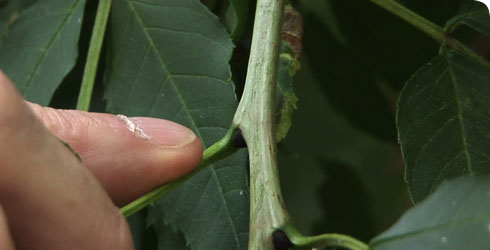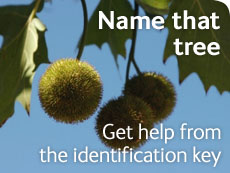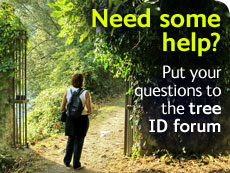Tree identification tips
Here are some tips from Museum experts to help you identify trees for the urban tree survey.
Evergreen or deciduous?
It's easy to tell evergreen from deciduous trees when the latter shed their leaves, but not so simple when they are in leaf. Evergreen leaves are usually thick and glossy or waxy, but some deciduous trees also have leaves like this, so check other characteristics too.
Tree shape
It is possible to identify some species of tree from their outline or silhouette but urban trees are often pollarded (cut back) or pruned, which greatly alters their natural shape.
Twigs
Look at the current year’s growth of twigs, known as ‘first year' twigs. These are usually flexible and more colourful than 'second year’ and older twigs. Older twigs are stiffer, duller and tend to lose the features such as hairs that help with identification.
Buds
Buds are most useful for identification in winter when a tree is not in leaf. Their shape and colour give clues and also show how the leaves will be arranged on the twig.
Flowers
Flowers on a tree are arranged in an inflorescence. There are many possible arrangements. Some trees have individual flowers, while some wind-pollinated trees have slender inflorescences called catkins that appear before the leaves to enable them to shed pollen efficiently.
Leaves
Leaf shape and their arrangement on twigs is often important for identifying trees. Leaves vary in size and shape on the same tree so look for mature ones, which are away from the tips of twigs, and measure several to get an average length. It is not unusual to find leaves outside the range given in a description.
Find out more about leaf shapes and arrangements in our glossary
Take care not to damage trees
Trees can afford to lose the odd leaf or flower but breaking off branches is unnecessary and harmful. Never cut into the bark as this allows infections to take hold. Trees should be appreciated not vandalised.
Equipment
You don’t need to take equipment with you to identify trees but a few items can be useful:
- A hand lens or magnifying glass (up to x10) to check for hairs and other characters that are difficult to see.
- A notebook to record size and colour or to sketch shapes. Leaves shrivel and flowers can fade quickly so note details while they are fresh.
- A camera for recording the shape of the tree and making a permanent record. Remember that most cameras won’t capture features such as hairs clearly, so they are not a substitute for looking at the real thing.
You can download and print out these tips and more, as well as other documents that will help you survey trees, from the how to do the survey page.


